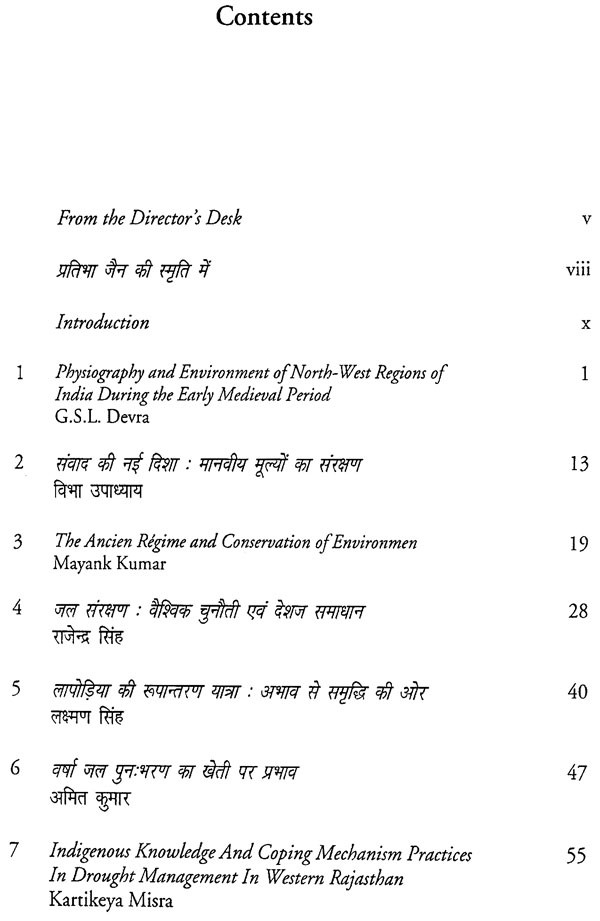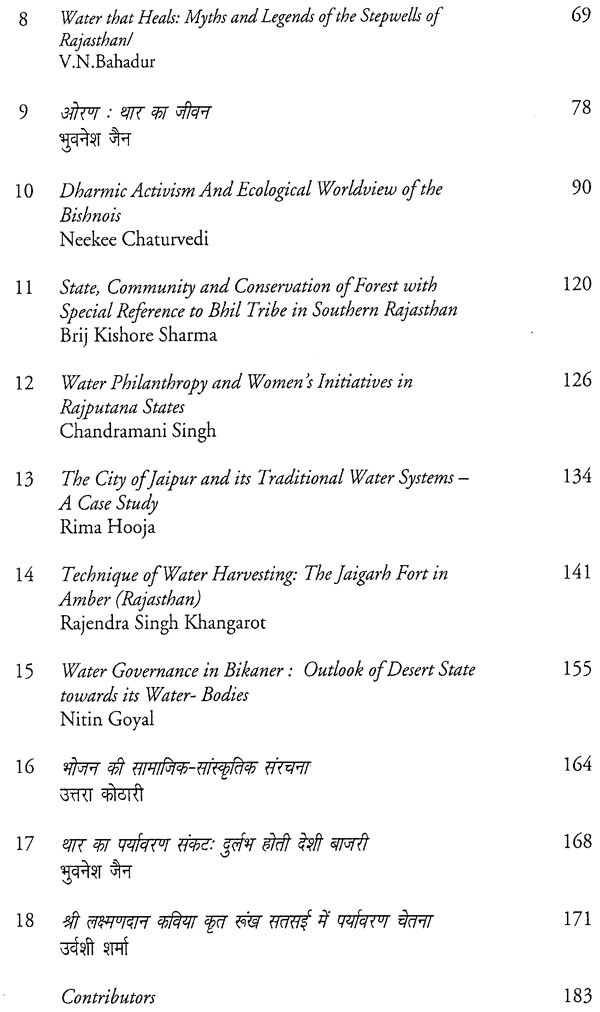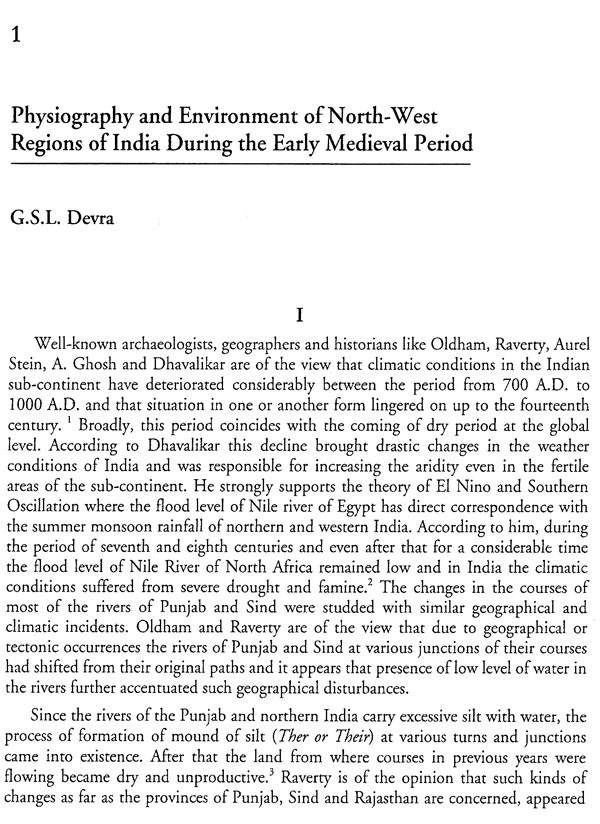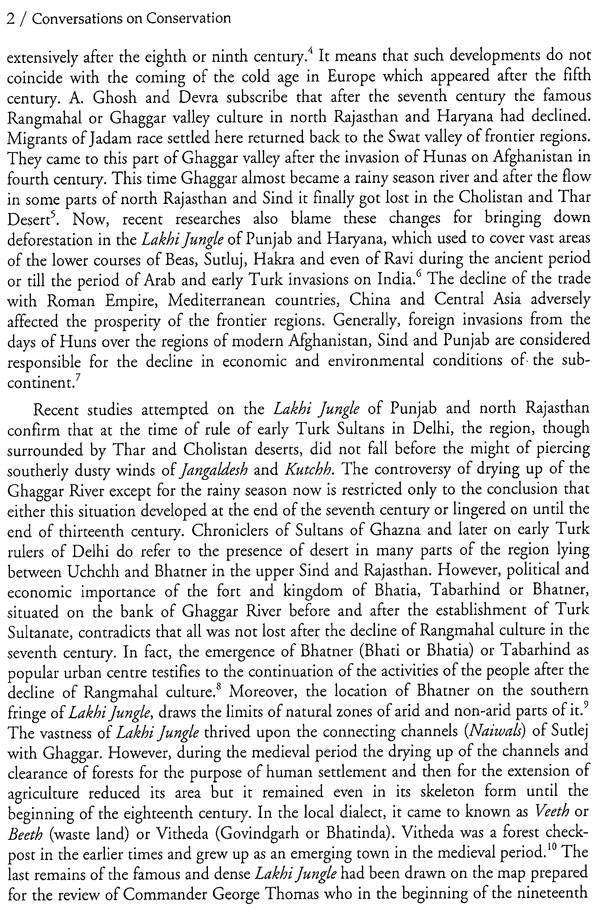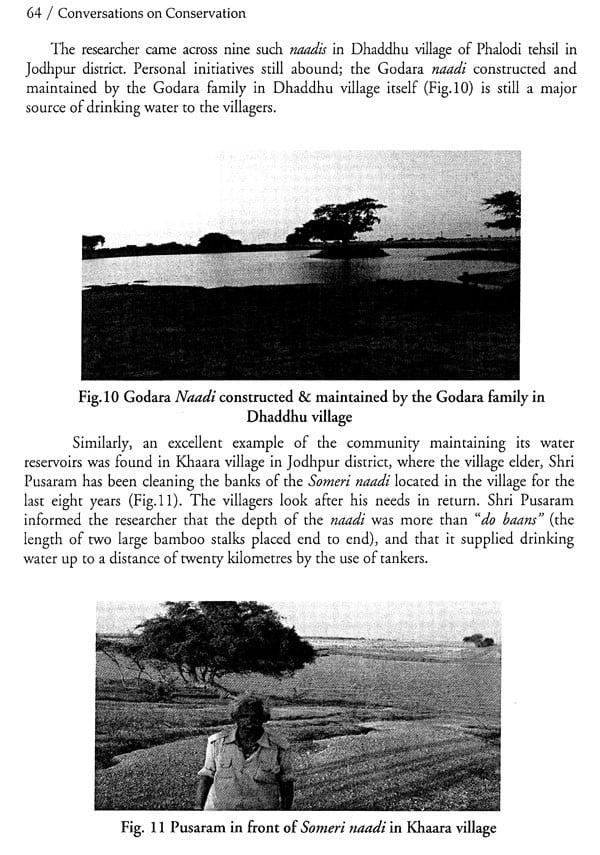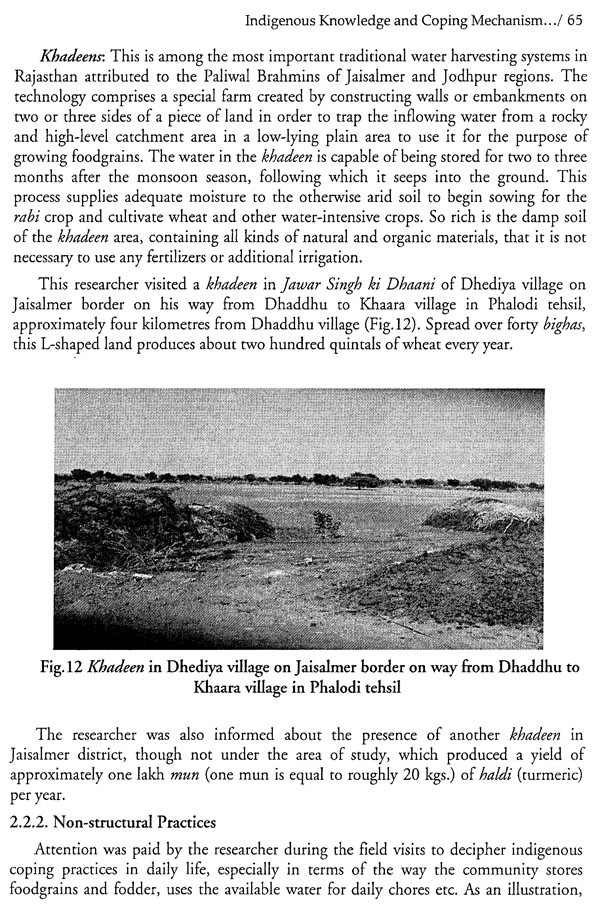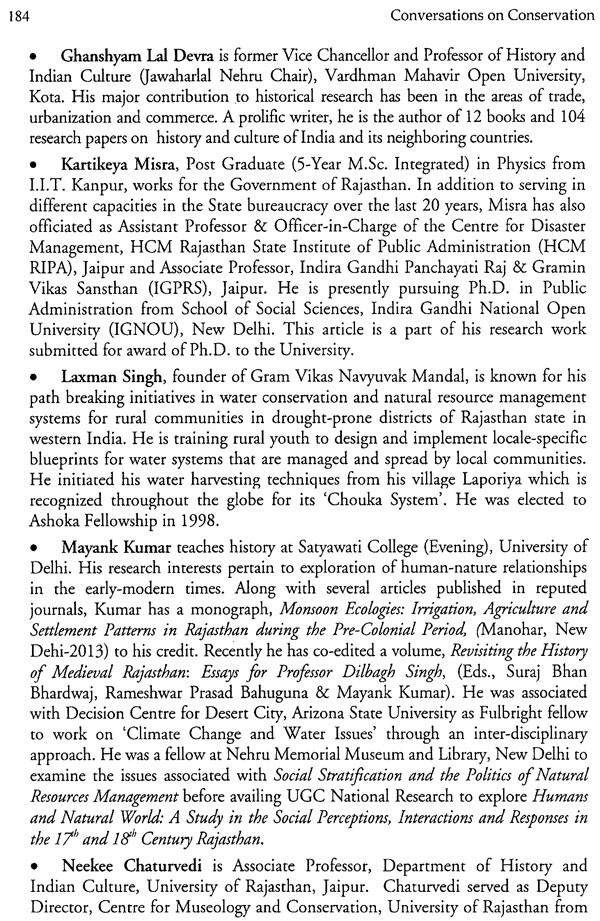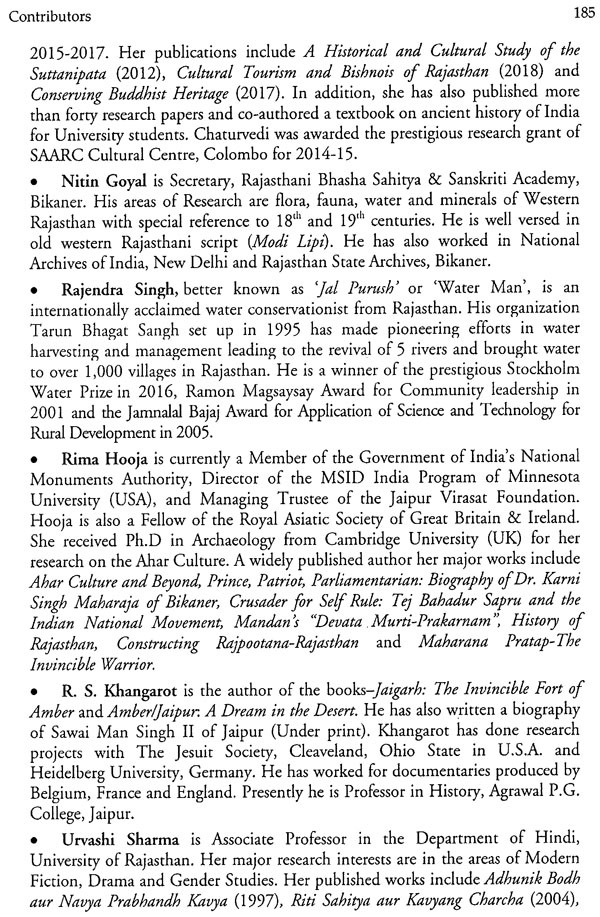
Conversations On Conservation Narratives From Rajasthan
Book Specification
| Item Code: | NCZ237 |
| Author: | Sangeeta Sharma, Urvashi Sharma and G.S. Gupta |
| Publisher: | Centre For Rajasthan Studies, Jaipur |
| Language: | Hindi and English |
| Edition: | 2019 |
| ISBN: | 978938544552 |
| Pages: | 186 (Throughout B/W Illustrations) |
| Cover: | HARDCOVER |
| Other Details | 9.50 X 6.50 inches |
| Weight | 500 gm |
Book Description
Urvashi Sharma is Associate Professor in the Department of Hindi, University of Rajasthan. Her major research interests are in the area of Modern Fiction, Drama and Gender Studies. Her published works include Adhunikbodh aur Navya Prabandh Kavya, Riti Sahitya aur Kavyang Charcha and Hindi Kahani ki Manchdharmita. She is widely published in reputed journals of Hindi. Presently, she is Deputy Director, Centre for Rajasthan Studies, University of Rajasthan.
G.S. Gupta is Research Assistant in Centre for Rajasthan Studies, University of Rajasthan, Jaipur. His areas of interest are in the realm of History and Culture of Rajasthan. Earlier he has taught history for fourteen years in Chidawa Post Graduate College. Widely published in journals, he has authored a book titled Kaviraja Shyamaldas ka Itihas Lekhan published by Hindi Granth Academy. He is in the editorial team of journal Sanskritik Pravah.
The history of the region resonates with a thriving tradition of community participation in conservation of water and forests efficiently complemented by the initiatives of the ruling classes. The peculiar ecological scenario has nurtured cultural and religious traditions that show reverence for water, forests and wild life. The iconic status of the region as the land of evolved attitudes to conservation can be traced to the supreme sacrifice of Amrita Bai of Khejaralli village of Jodhpur District of Rajasthan of Bishnoi community who sacrificed her life for saving the trees of her village. As far back as 1731, the Maharaja of Jodhpur ordered that a number of Khejri trees be cut for his furnace. The Bishnois resisted the move and in a bid to stop the felling down of the trees, Amrita Devi embraced the tree and was hacked along with the trees as per the orders of the then Maharaja. Her three daughters and later her husband came forward and one by one 363 people were killed and the trees remained untouched because of the villagers' strong resistance.
However, dependence on modern technology, industrialization and consumption patterns coupled with weakening of the community spirit for conservation has had adverse implications for resource conservation. The environmental predicament that is posing an existential crisis before the world has rendered re-visiting and re-learning of the conservation-wisdom of the past a stark necessity. The collection of essays on conservation of bio-diversity in the region of Rajasthan is the result of two-day `Conversations on Conservation' organised by the Centre for Rajasthan Studies, University of Rajasthan to explore, identify and document diverse dimensions of traditional, indigenous and local wisdom on conservation of bio-diversity among different groups, communities and the state as also the contemporary initiatives by Conversations on Conservation xi government, non-governmental agencies and individuals. The Conversations brought together environmentalists, historians, litterateurs, sociologists, and development activists to explore environmental stories from the state of Rajasthan. The presentations for grounded the narrative of conservation inherent in the history and culture of the region as well as the recent efforts for conservation of water, food practices and other aspects of bio-diversity.
G.S.L. Devra's article 'Physiography and Environment of North-West Regions of India during the Early Medieval Period forms the backdrop of the volume as it traces the historical trajectory of the desertification and aridity of the region in the seventh and eighth centuries. While deliberating on the factors that accelerated the environmental decline of the region, he has cited numerous authorities to prove his contention that desert condition of the Thar Desert is a result of continuous process of desertification that went on in the regions of Punjab, Gujarat, Sind and Rajasthan in the early medieval period. According to the author, "It is beyond doubt that the reduction and ultimate disappearance of the area of Lakhi Jungle from the regions of Punjab and north Rajasthan paved the way for the expansion of the Thar Desert towards its northern side." With the passage of time the process of desertification could not be stopped and until the commencement of the modern period, the ever-creeping desert succeeded in swallowing the new and fertile areas of the land of its neighbouring regions.
The presentations by Vibha Upadhayaya and Mayank Kumar re-examine the discourse of conservation in ancient times in India. Vibha Upadhyaya in her essay titled Samvad ki Nayi Disha: Manviya Mulyon ka Sarankshan' links the ethic of conservation to the exaltation of human values in society. She juxtaposes the material and scientific development of the contemporary period with the rapid decline in human values. The article seeks to highlight the classical Indian thought as an all-embracing and inclusive worldview that views human world in relation to nature, environment, space, etc. Her lucid article examines the environmental consciousness, concerns and ethics postulated in ancient scriptures. In addition to the deification and veneration of natural entities in the Vedic texts, she refers to the numerous injunctions in the Buddhist and Jain texts as well as in the Puranas regarding conservation of trees, water and other natural resources. The author however poses a query if these explicit decrees in the ancient texts are a pointer to any kind of imminent danger to the environment in those times or it merely signifies the heightened environmental awareness of the ancient man.
Mayank Kumar has underscored the need to recognize that the contestations and conflicts over environmental resources and even conservation of environment had very different connotations during pre-modern era or as Annales School defines during Ancient Regime. His paper titled The Ancient Regime and Conservation of Environment' seeks to convey that contemporary usages and understanding of the term conservation cannot and should not be impressed upon past societies.
Book's Contents and Sample Pages
